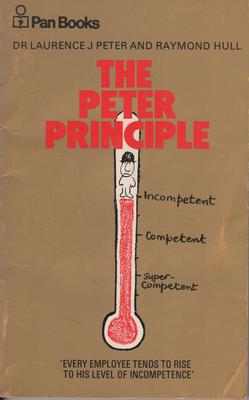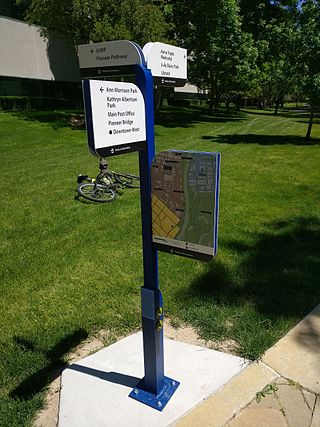
The Golden Rule is the principle of treating others as one wants to be treated. Various expressions of this rule can be found in the tenets of most religions and creeds through the ages. It can be considered an ethic of reciprocity in some religions, although different religions treat it differently.

KISS, an acronym for "Keep it simple, stupid!", is a design principle noted by the U.S. Navy in 1960. First seen partly in American English by at least 1938, the KISS principle states that most systems work best if they are kept simple rather than made complicated; therefore, simplicity should be a key goal in design, and unnecessary complexity should be avoided. The phrase has been associated with aircraft engineer Kelly Johnson. The term "KISS principle" was in popular use by 1970. Variations on the phrase include "keep it super simple", "keep it simple, silly", "keep it short and simple", "keep it short and sweet", "keep it simple and straightforward", "keep it small and simple", "keep it simple, soldier", "keep it simple, sailor", "keep it simple, sweetie", "keep it stupidly simple", or "keep it sweet and simple".

The Peter principle is a concept in management developed by Laurence J. Peter, which observes that people in a hierarchy tend to rise to "a level of respective incompetence": employees are promoted based on their success in previous jobs until they reach a level at which they are no longer competent, as skills in one job do not necessarily translate to another.

The Pareto principle states that for many outcomes, roughly 80% of consequences come from 20% of causes. Other names for this principle are the 80/20 rule, the law of the vital few, or the principle of factor sparsity.

A prototype is an early sample, model, or release of a product built to test a concept or process. It is a term used in a variety of contexts, including semantics, design, electronics, and software programming. A prototype is generally used to evaluate a new design to enhance precision by system analysts and users. Prototyping serves to provide specifications for a real, working system rather than a theoretical one. In some design workflow models, creating a prototype is the step between the formalization and the evaluation of an idea.

A New Kind of Science is a book by Stephen Wolfram, published by his company Wolfram Research under the imprint Wolfram Media in 2002. It contains an empirical and systematic study of computational systems such as cellular automata. Wolfram calls these systems simple programs and argues that the scientific philosophy and methods appropriate for the study of simple programs are relevant to other fields of science.
Software design is the process by which an agent creates a specification of a software artifact intended to accomplish goals, using a set of primitive components and subject to constraints. Software design may refer to either "all the activity involved in conceptualizing, framing, implementing, commissioning, and ultimately modifying complex systems" or "the activity following requirements specification and before programming, as ... [in] a stylized software engineering process."
The idea–expression distinction or idea–expression dichotomy is a legal doctrine in the United States that limits the scope of copyright protection by differentiating an idea from the expression or manifestation of that idea.

The Liskov substitution principle (LSP) is a particular definition of a subtyping relation, called strong behavioral subtyping, that was initially introduced by Barbara Liskov in a 1987 conference keynote address titled Data abstraction and hierarchy. It is based on the concept of "substitutability" – a principle in object-oriented programming stating that an object may be replaced by a sub-object without breaking the program. It is a semantic rather than merely syntactic relation, because it intends to guarantee semantic interoperability of types in a hierarchy, object types in particular. Barbara Liskov and Jeannette Wing described the principle succinctly in a 1994 paper as follows:
Subtype Requirement: Let be a property provable about objects of type T. Then should be true for objects of type S where S is a subtype of T.

Proof of concept, also known as proof of principle, is a realization of a certain method or idea in order to demonstrate its feasibility, or a demonstration in principle with the aim of verifying that some concept or theory has practical potential. A proof of concept is usually small and may or may not be complete.

The homestead principle is the principle by which one gains ownership of an unowned natural resource by performing an act of original appropriation. Appropriation could be enacted by putting an unowned resource to active use , joining it with previously acquired property or by marking it as owned.
Neither software nor computer programs are explicitly mentioned in statutory United States patent law. Patent law has changed to address new technologies, and decisions of the United States Supreme Court and United States Court of Appeals for the Federal Circuit (CAFC) beginning in the latter part of the 20th century have sought to clarify the boundary between patent-eligible and patent-ineligible subject matter for a number of new technologies including computers and software. The first computer software case in the Supreme Court was Gottschalk v. Benson in 1972. Since then, the Supreme Court has decided about a half dozen cases touching on the patent eligibility of software-related inventions.
Patentable, statutory or patent-eligible subject matter is subject matter which is susceptible of patent protection. The laws or patent practices of many countries provide that certain subject-matter is excluded from patentability, even if the invention is novel and non-obvious. Together with criteria such as novelty, inventive step or nonobviousness, utility, and industrial applicability, which differ from country to country, the question of whether a particular subject matter is patentable is one of the substantive requirements for patentability.
The law of triviality is C. Northcote Parkinson's 1957 argument that people within an organization commonly or typically give disproportionate weight to trivial issues. Parkinson provides the example of a fictional committee whose job was to approve the plans for a nuclear power plant spending the majority of its time on discussions about relatively minor but easy-to-grasp issues, such as what materials to use for the staff bicycle shed, while neglecting the proposed design of the plant itself, which is far more important and a far more difficult and complex task.
Legal certainty is a principle in national and international law which holds that the law must provide those subject to it with the ability to regulate their conduct.
Perfect is the enemy of good is an aphorism which means insistence on perfection often prevents implementation of good improvements. The Pareto principle or 80–20 rule explains this numerically. For example, it commonly takes 20% of the full time to complete 80% of a task while to complete the last 20% of a task takes 80% of the effort. Achieving absolute perfection may be impossible and so, as increasing effort results in diminishing returns, further activity becomes increasingly inefficient.
The principle of least astonishment (POLA), aka principle of least surprise, applies to user interface and software design. It proposes that a component of a system should behave in a way that most users will expect it to behave, and therefore not astonish or surprise users. The following is a formal statement of the principle: "If a necessary feature has a high astonishment factor, it may be necessary to redesign the feature."
Object-oriented programming (OOP) is a programming paradigm based on the concept of "objects", which can contain data and code. The data is in the form of fields, and the code is in the form of procedures.
Alice Corp. v. CLS Bank International, 573 U.S. 208 (2014), was a 2014 United States Supreme Court decision about patent eligibility. The issue in the case was whether certain patent claims for a computer-implemented, electronic escrow service covered abstract ideas, which would make the claims ineligible for patent protection. The patents were held to be invalid because the claims were drawn to an abstract idea, and implementing those claims on a computer was not enough to transform that abstract idea into patentable subject matter.
Open source is source code that is made freely available for possible modification and redistribution. Products include permission to use the source code, design documents, or content of the product. The open-source model is a decentralized software development model that encourages open collaboration. A main principle of open-source software development is peer production, with products such as source code, blueprints, and documentation freely available to the public. The open-source movement in software began as a response to the limitations of proprietary code. The model is used for projects such as in open-source appropriate technology, and open-source drug discovery.







